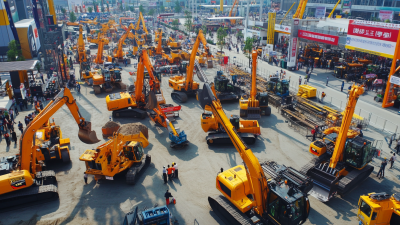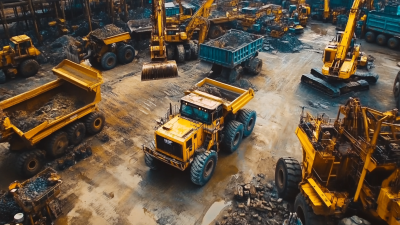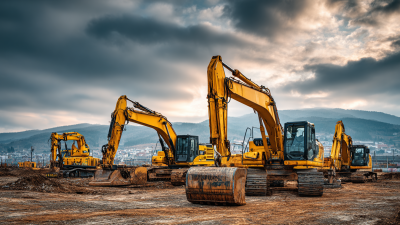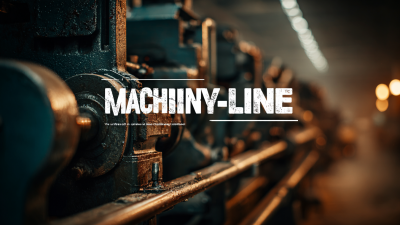Leave Your Message
- Phone
- E-mail
- Whatsapp
As we approach the 138th Canton Fair in 2025, the spotlight on construction vehicles intensifies, reflecting the industry's innovative trajectory and its response to global demands. According to a recent report by MarketsandMarkets, the construction vehicle market is projected to grow from $150 billion in 2022 to $235 billion by 2027, indicating a compound annual growth rate (CAGR) of 9.2%. This growth is driven by the rising need for modernization in infrastructure and the integration of advanced technologies such as automation and electrification in construction vehicles.
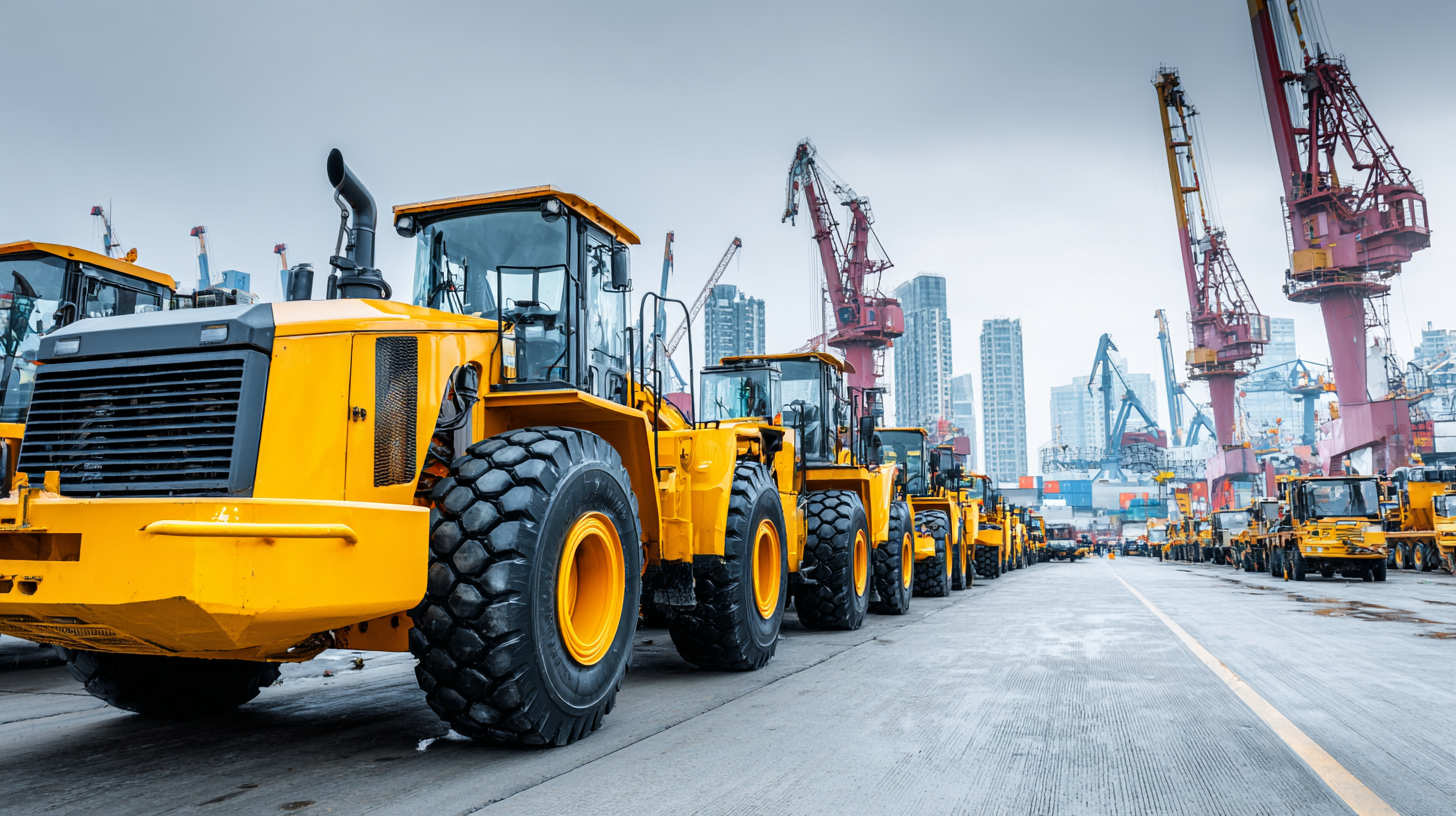
The Canton Fair serves as a pivotal platform for industry leaders to showcase cutting-edge developments and foster collaborations that will shape the future of construction equipment. With major trends emerging, including sustainability initiatives and smart construction solutions, the exhibition promises to provide invaluable insights into the evolving landscape of the construction vehicle sector.
As the 138th Canton Fair in 2025 approaches, the construction vehicle industry is witnessing a significant transformation driven by innovative technologies. A recent report from Global Construction Vehicles Market Analysis indicates that the market is expected to grow at a CAGR of 6.3%, reaching a valuation of $120 billion by 2027. This growth is largely attributed to advancements in automation, electrification, and connectivity, which are revolutionizing how construction projects are executed.
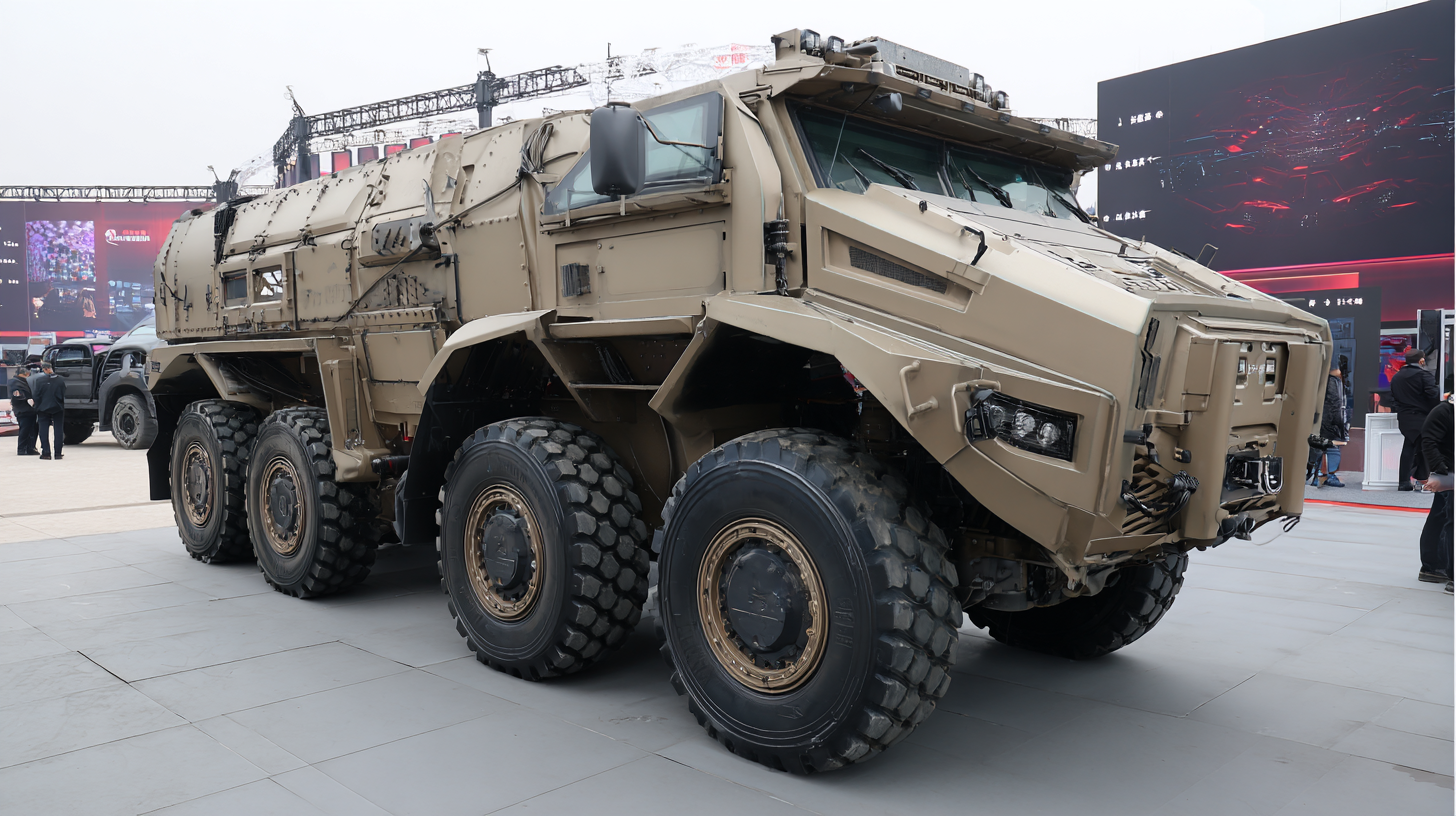
One of the standout innovations is the integration of Internet of Things (IoT) in construction vehicles, which enhances operational efficiency and safety. According to a study conducted by Market Research Future, the IoT in construction vehicles is projected to reach $7 billion by 2024, driven by increasing demand for real-time data analytics and fleet management solutions. Furthermore, with the rise of electric and hybrid construction vehicles, companies are not only reducing their carbon footprint but also benefitting from lower operational costs, thus aligning with global sustainability goals. The Canton Fair will undoubtedly be a platform to showcase these groundbreaking technologies that are shaping the future landscape of construction vehicles.
The construction vehicle industry is undergoing a significant transformation, driven by a growing emphasis on sustainability. At the 138th Canton Fair 2025, the spotlight will be on innovative technologies designed to reduce the environmental impact of construction activities. Manufacturers are increasingly adopting electric and hybrid vehicles, which not only lower carbon emissions but also provide long-term cost savings through reduced fuel consumption. This trend aligns with global efforts to combat climate change and reflects a collective shift towards greener operations in heavy industries.
In addition to electrification, the use of alternative materials and advancements in automation are reshaping the construction vehicle landscape. Companies are exploring the integration of lightweight, sustainable materials that enhance fuel efficiency and reduce waste. Moreover, automation and smart technologies are being employed to optimize performance and minimize energy use. As these sustainability trends gain momentum, the construction vehicle sector stands to not only improve its ecological footprint but also enhance productivity and operational efficiency, signaling a new era of environmentally responsible construction practices.
| Trend | Description | Impact on Industry | Future Outlook |
|---|---|---|---|
| Electrification | Transitioning from diesel to electric powered construction vehicles. | Reduction in emissions, lower operational costs. | Increased adoption of electric vehicles, innovative battery technologies. |
| Automation | Integration of automated systems for enhanced productivity. | Higher efficiency, reduced labor costs, greater precision. | Widespread use of autonomous vehicles, improvements in AI technology. |
| Sustainable Materials | Use of eco-friendly and recycled materials in vehicle production. | Reduced environmental impact, compliance with regulations. | Growth in demand for sustainable products. |
| Digitalization | The use of IoT and data analytics for monitoring and maintenance. | Improved decision-making, predictive maintenance. | Integration of smart technologies and increased data-driven operations. |
As we approach the 138th Canton Fair in 2025, understanding consumer demand and preferences for construction vehicles is paramount. Recent industry reports indicate that the global construction vehicle market is projected to reach approximately $200 billion by 2025, growing at a compound annual growth rate (CAGR) of 5.4%. This growth is largely driven by increasing urbanization and infrastructure development, particularly in emerging markets. Consumers are looking for vehicles that not only enhance productivity but also integrate advanced technology such as telematics and automation.
Moreover, sustainability is becoming a key factor influencing consumer preferences. According to a 2023 report by Market Research Future, over 70% of construction companies are prioritizing eco-friendly vehicles. This shift reflects a growing awareness of environmental impact, with electric and hybrid models gaining traction in the marketplace. Consumers are also favoring vehicles equipped with smart features that improve efficiency and reduce costs. As manufacturers prepare for the 138th Canton Fair, aligning product offerings with these insights on market demand will be crucial for capturing the attention of prospective buyers.
At the 138th Canton Fair in 2025, the spotlight will be on key players and innovative startups that are transforming the construction vehicle sector. Leading companies are showcasing advancements in electric and autonomous vehicle technologies, addressing the industry's push towards sustainability. Major manufacturers are presenting their latest models equipped with sophisticated sensors and AI-driven systems, designed to enhance efficiency and safety on construction sites. These developments promise to minimize environmental impact while maximizing productivity.
In addition to established players, several startups are making waves with groundbreaking designs and concepts. They focus on modular construction vehicles that can be easily adapted for various tasks, thereby increasing versatility on the job site. These newcomers prioritize user experience and connectivity, integrating smart technology that allows real-time data tracking and fleet management. The collaborative efforts between traditional manufacturers and these innovative startups are setting the stage for a new era in construction vehicle design, emphasizing both functionality and an eco-friendly future.

The construction vehicle industry in China is on the brink of significant evolution, driven by both emerging challenges and opportunities. A report by the China Construction Machinery Association (CCMA) anticipates that the market for construction vehicles will grow at a compound annual growth rate (CAGR) of 7.5% from 2023 to 2028. This growth is fueled by government investments in infrastructure, including the ambitious Belt and Road Initiative, which aims to enhance connectivity and stimulate economic development across regions.
However, this growth also brings challenges. The transition to more sustainable practices is becoming imperative as the industry grapples with rising environmental regulations. According to a McKinsey report, nearly 30% of construction emissions are attributed to heavy machinery, prompting the industry to innovate. Electric and hybrid vehicles are emerging as viable alternatives, with companies like Caterpillar and SANY making strides towards electrification. Additionally, advancements in automation and smart technology present both opportunities for efficiency and the challenge of integrating new systems into traditional practices. As the 138th Canton Fair approaches, these trends will be pivotal in reshaping the landscape of construction vehicles in China.
